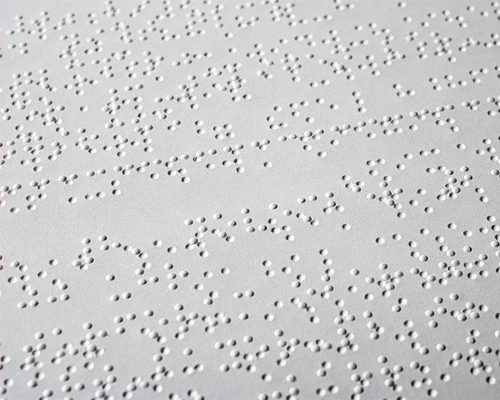Traditional text can now be viewed as Braille with this revolutionary implant.
Retina implants have been used for years as a revolutionary way to restore partial vision to those who have lost their eyesight through outer retinal degeneration. This destructive vision problem is a deterioration of the retina―the specialized light-sensitive tissue at the back of the eye which connects to a neural network that helps us process visual information. When the retina begins to deteriorate, it eventually causes the cells of the retina to die and prompts a serious loss in vision for those affected.
Luckily, retina implants have done a great job restoring some sight to those who suffer from retinal degeneration. However, while overall sight may have been improved through basic retina implants, many patients found that they still had some difficulty when it came to reading text and fine print.
In order to help combat this issue, researchers have recently began developing an amazing new implant which will allow traditional text to be viewed as Braille letters.
While this new implant will not allow patients to be able to feel the Braille letters, as how is traditionally done when reading Braille, they will be able to see the visual representations of the letters in Braille. This will be significantly easier to read for patients who have trouble viewing fine text letters, and it will be simply to understand than traditional text.
The technology used for this new retina implant is built off of a previous technology, the Argus II. This technology, which is already available for sale in Europe, uses an electrode array implanted epiretinally, a tiny video camera mounted on a pair of glasses, and a small, wearable computer that processes the video in real-time and creates the Braille letters from the text that is sees.
While this new technology will work well decoding large lettering, it is designed more for viewing bold lettering, such as street signs or posters, rather than small text in books. However, the technology is still being looked at by researchers.
A recent study on the Argus II technology published by Frontiers showed that the system was rather affective at adapting the Braille lettering. Patients who used the technology were able to correctly identify 89% of the single letters that were shown to them, 80% of the two letter combinations that they were shown, and 70% of the four letter words that were shown.
The Argus II system has plans to come to the United States as soon as possible, pending FDA approval. This type of retinal implant is not only a huge step in the right direction for those who suffer from vision loss due to retinal degeneration, but could also make a difference in how all other vision implants are viewed in the future.
What do you think of this type of technology? Is this something you would consider using if you had difficultly reading text due to retinal degeneration? Be sure to let us know your thoughts in the comments below!
